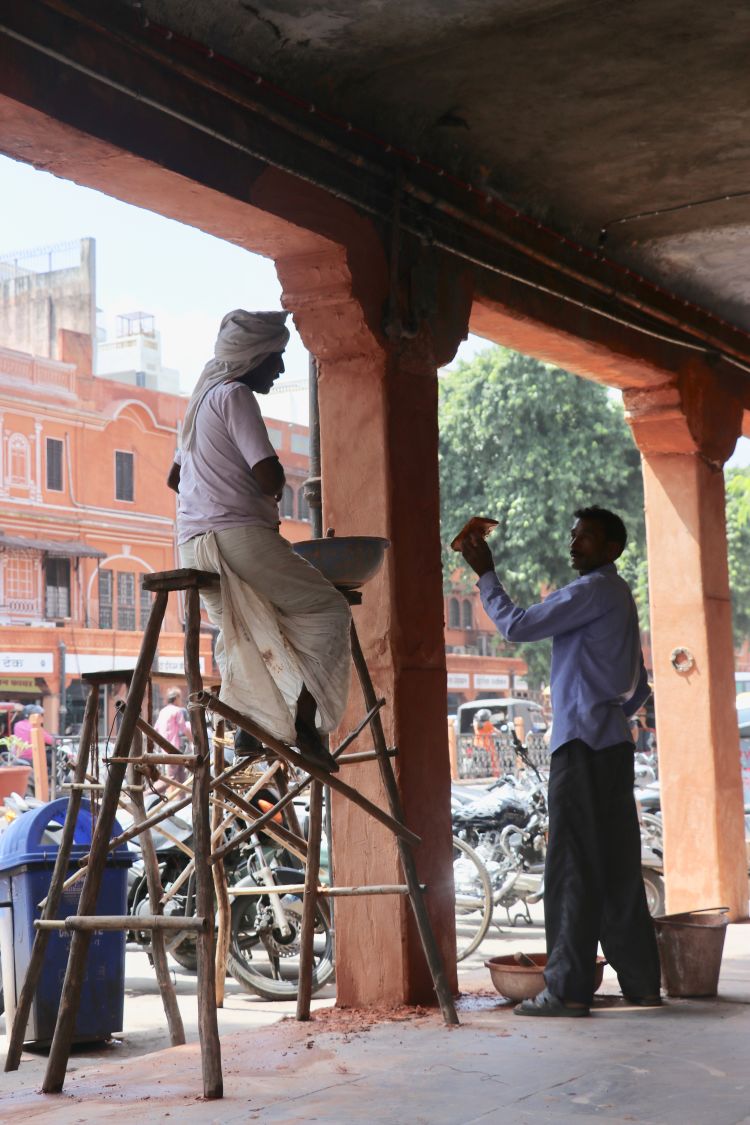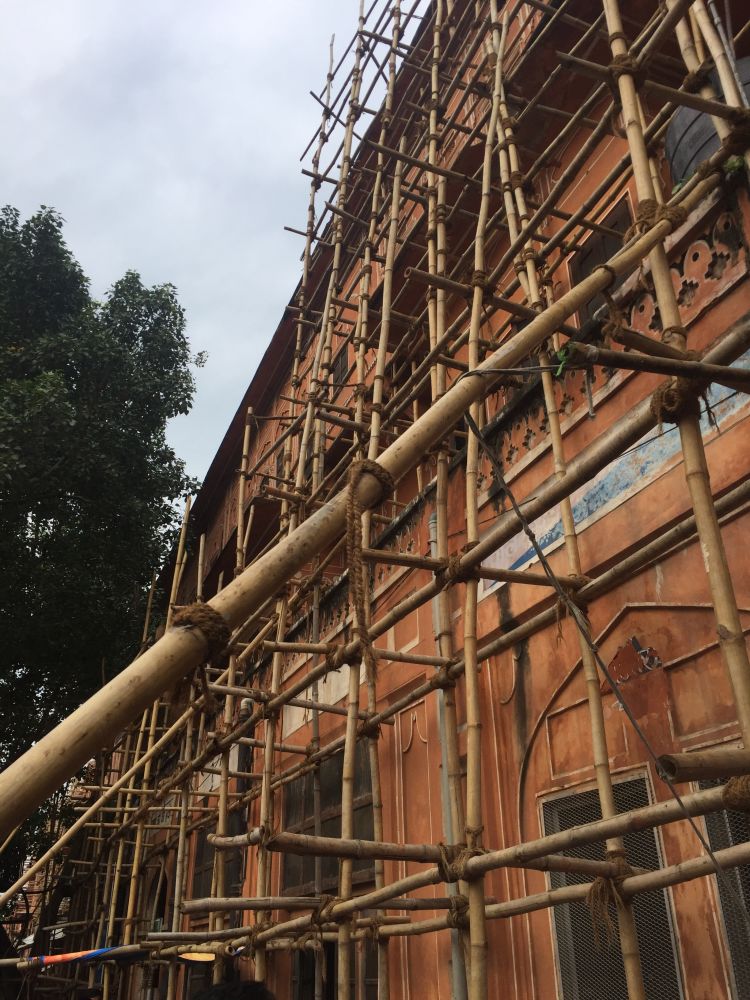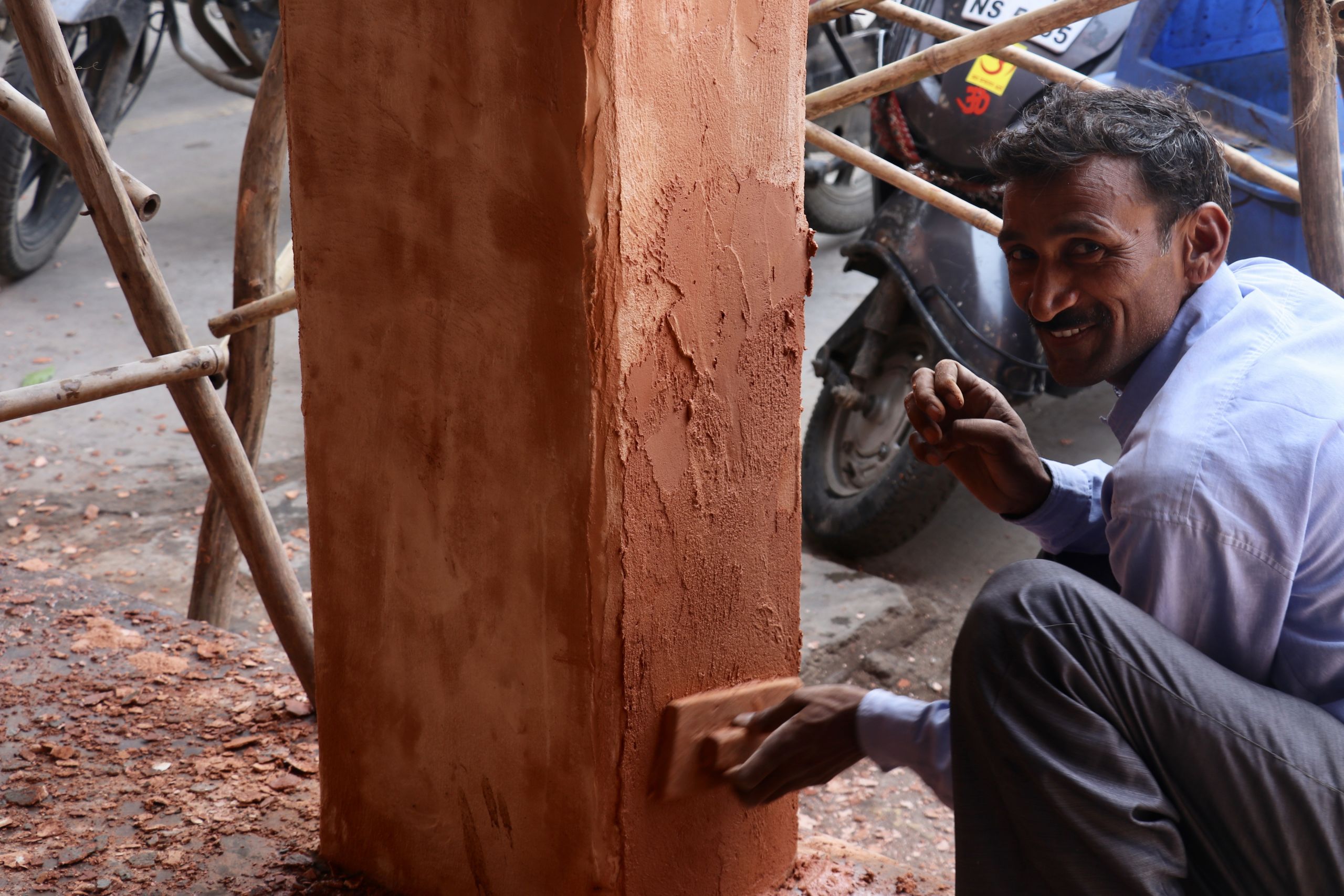Painters of the Pink City
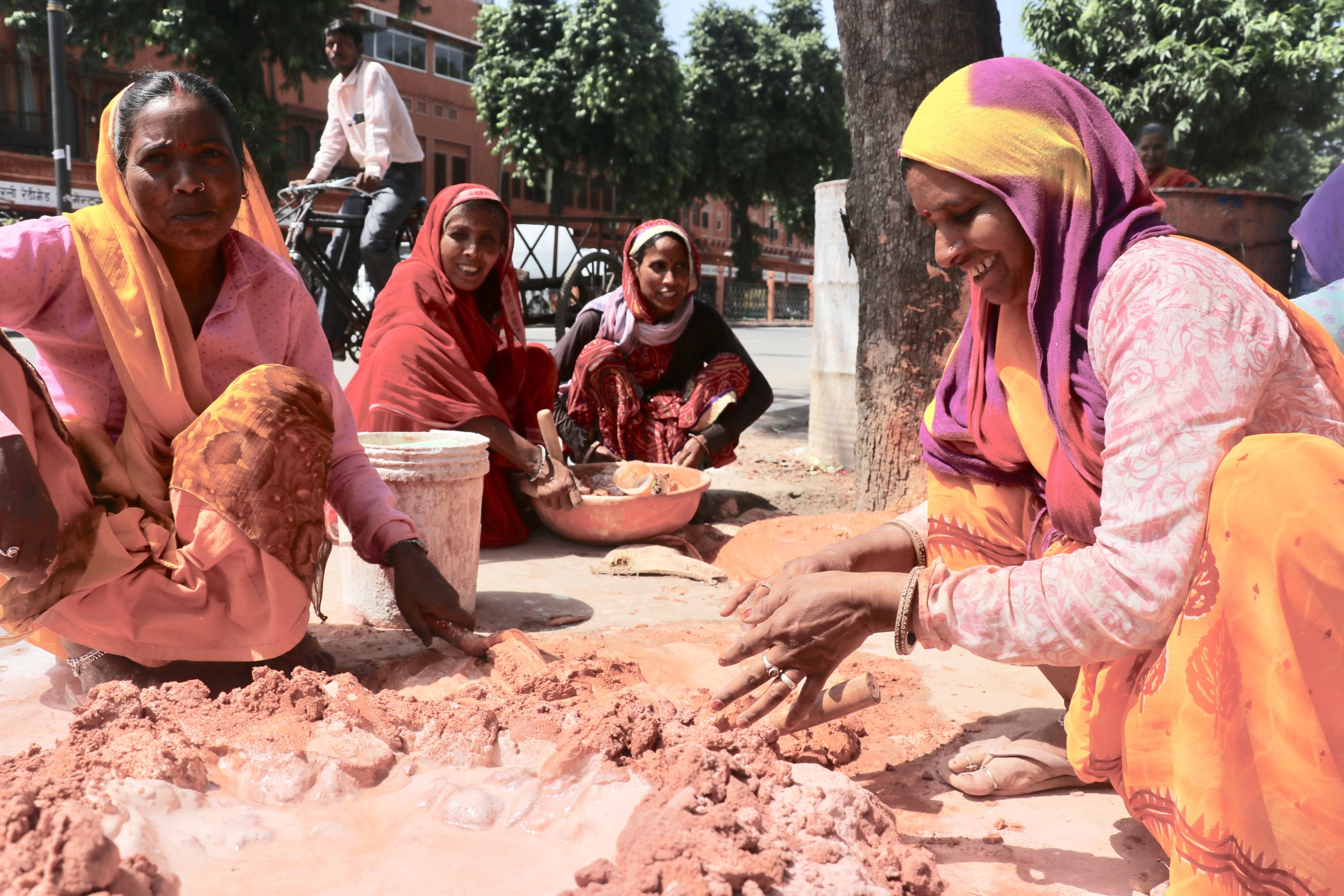
Huddled by the side of one of Jaipur's busiest roads, a group of women in vibrant sari's laugh and chat as they work.
Behind them, men chip away at Jaipur's famous pink walls.
These are the painters of the Pink City.
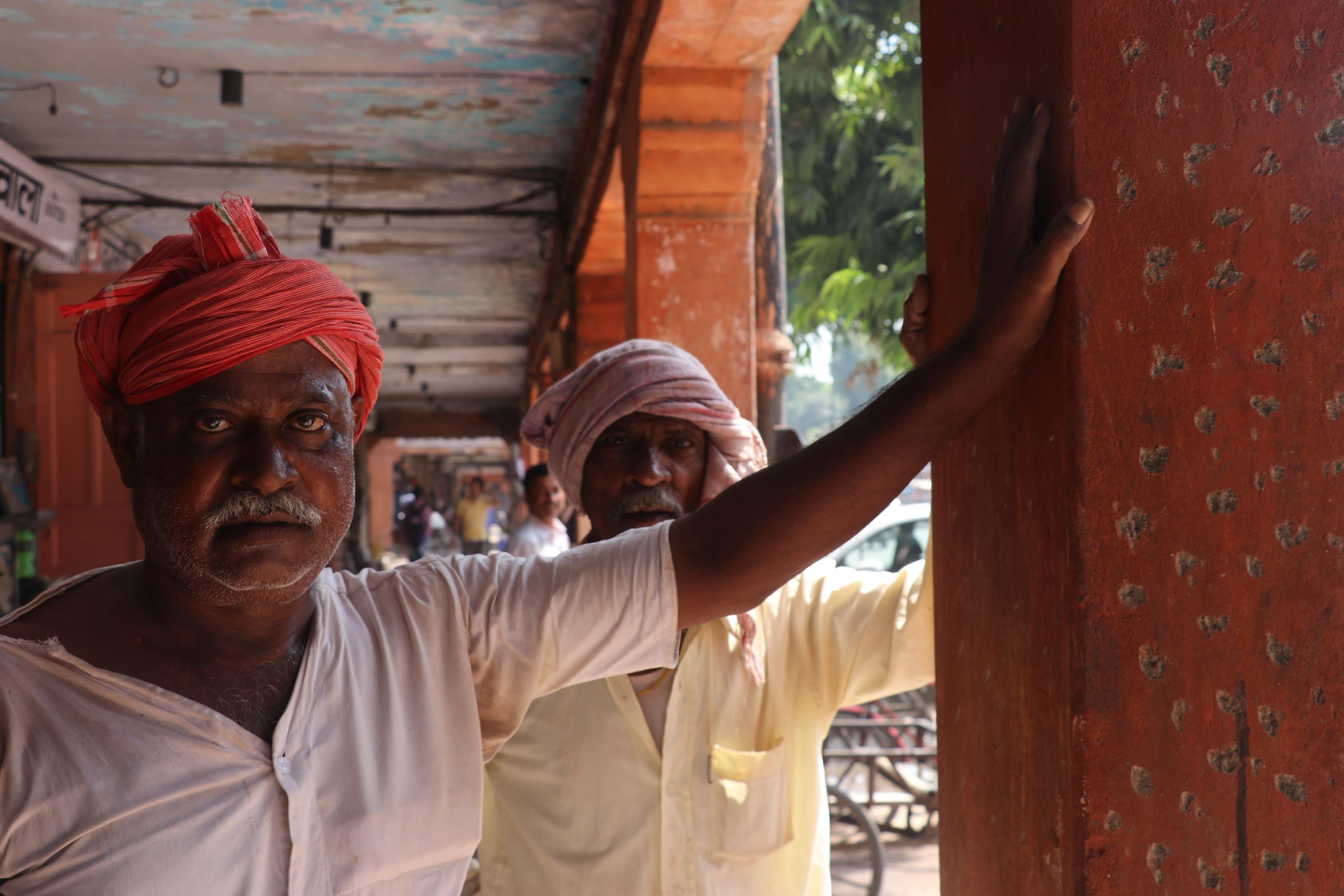
Make your way through the entrance to Jaipur's Old City and you will find many of these groups working to maintain the beauty of the Pink City.
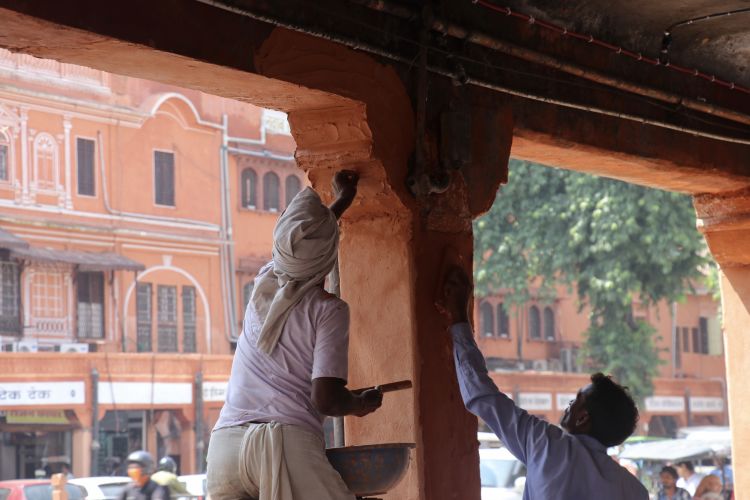
Within the walls of this heritage protected tourist hotspot, local law requires all buildings to be painted the famous Jaipur Pink thanks to an English Prince and a Maharani, or Indian Queen.
In 1876, Maharaja Sawai Ram Singh ordered buildings in the city to be painted pink to entice Prince Albert to visit Jaipur during his tour of India.
Once the Prince left, the Maharani loved the colour so much her husband put into law that all buildings in the Old City must stay that colour.
Fast forward to today and store owners contract local painters from Jaipur and surrounding rural areas to restore and refresh their shop fronts.
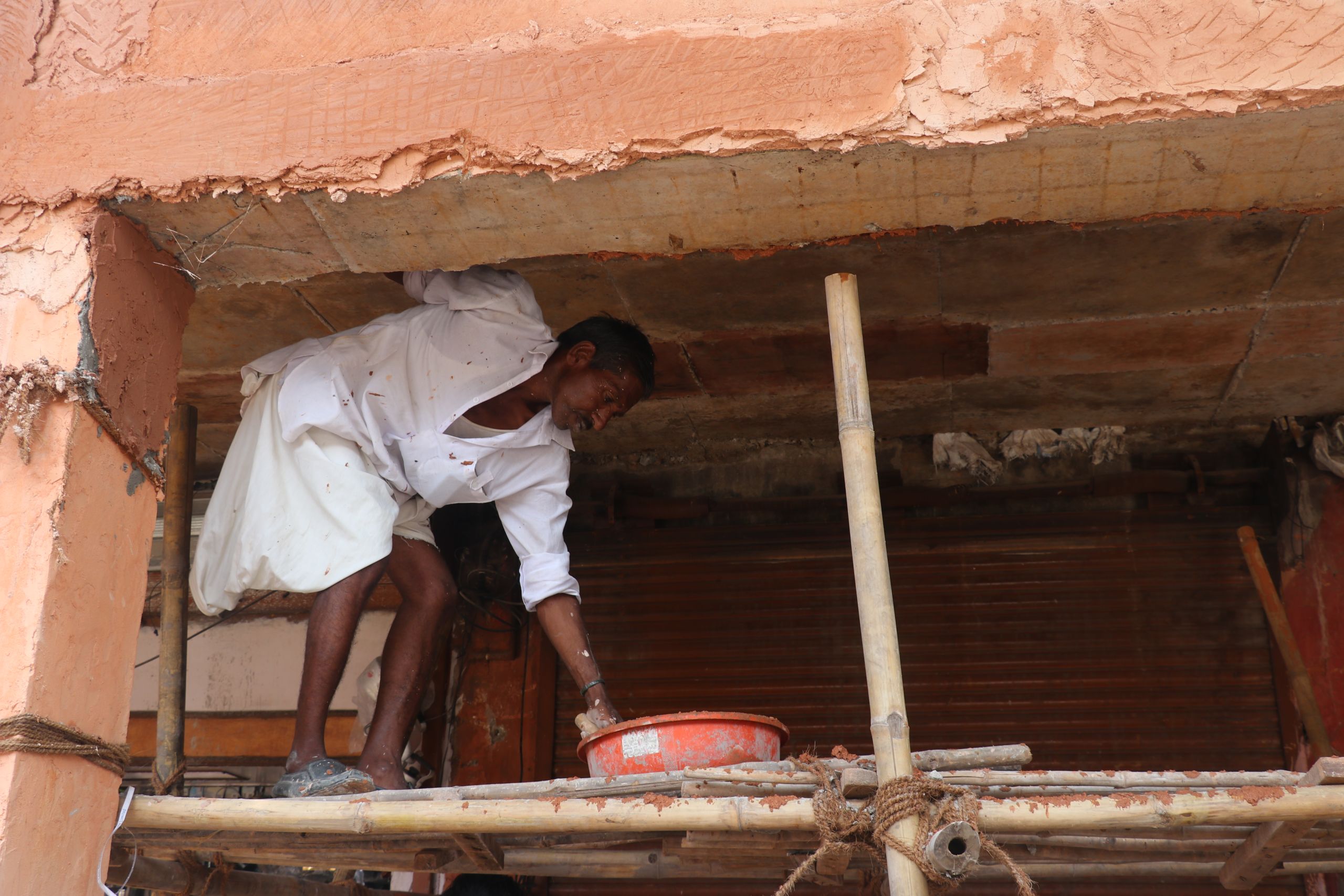
Due to the heritage laws governing the area, traditional methods and materials must be used in the restoration.
The tasks of the painters are segregated by gender.
Women sit in groups on the road side making the paint mixture, which is called 'lep'.
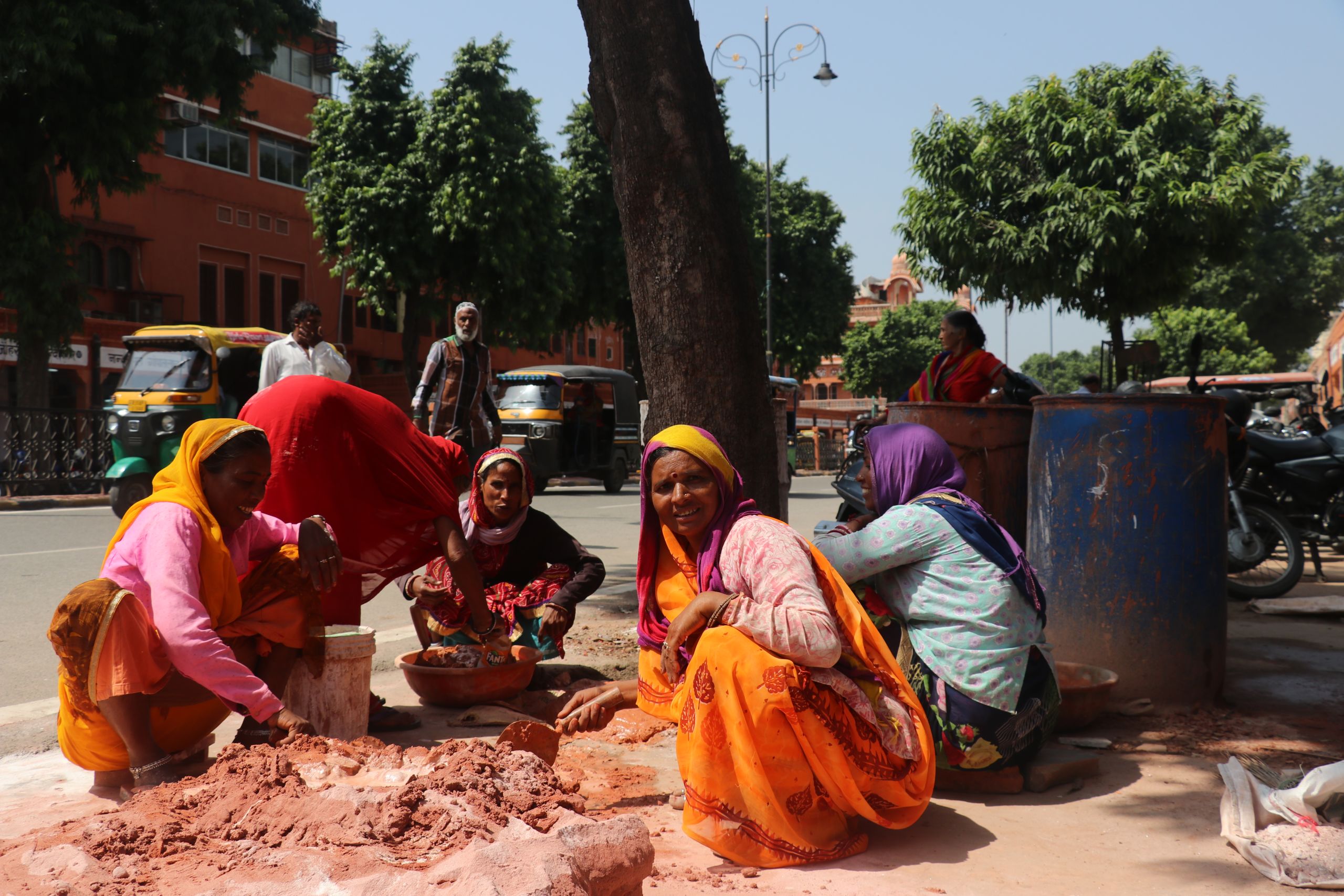
When the buildings were first painted, lep was made by combining red sand, purified lime powder and water.
However, as red sand is becoming harder to source, the mixture is now made from white cement, brick powder, molasses and water.
Men are tasked with chipping away areas of the wall that are faded or have black patches of dead fungus. Once that is completed, they use trovels and flat pieces of wood to smeer the paint mixture onto the wall.
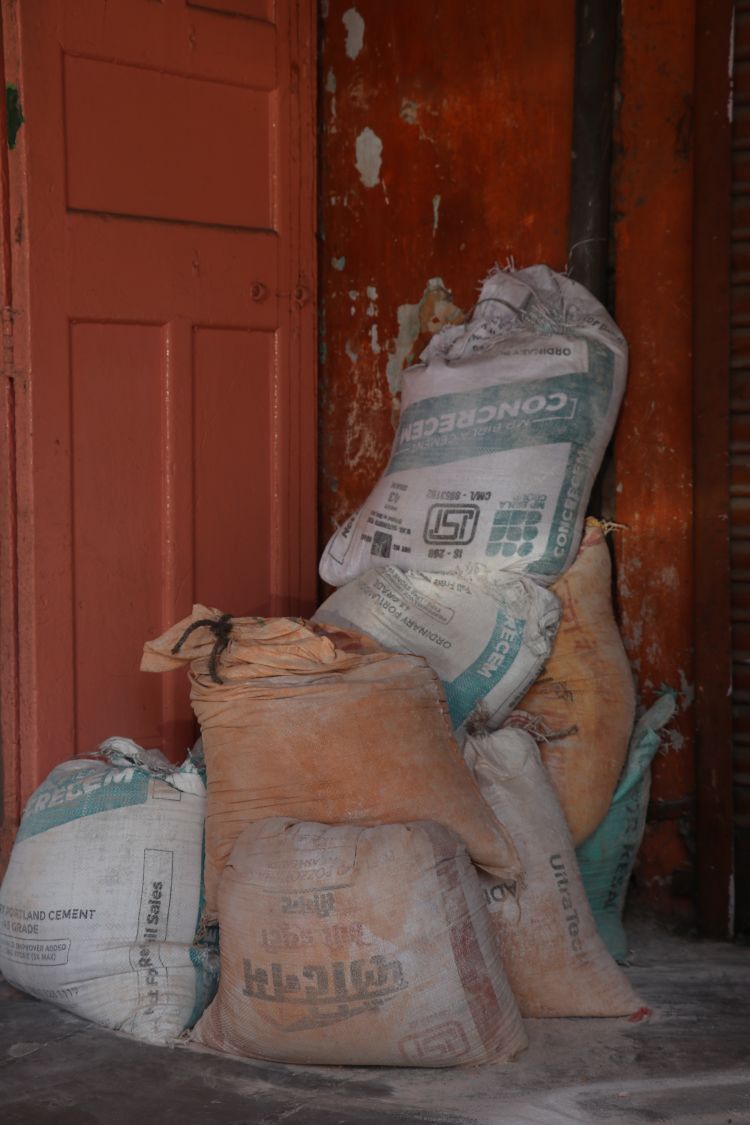
Bamboo scaffolding is used to paint the ceiling and external areas of the buildings.
This painting practice, known as 'arysh', is unique to Rajasthan due to its predominantly dry conditions. In other areas of India that experience a more intense monsoon season, the materials used would become too wet and much more fungus would grow.
Arysh is conducted in the lead up to Diwali, also known as the Festival of Lights. Entire streets light up for the biggest festival on the Indian calendar. And thanks to the painters of the Pink City, the buildings will be shining too.
